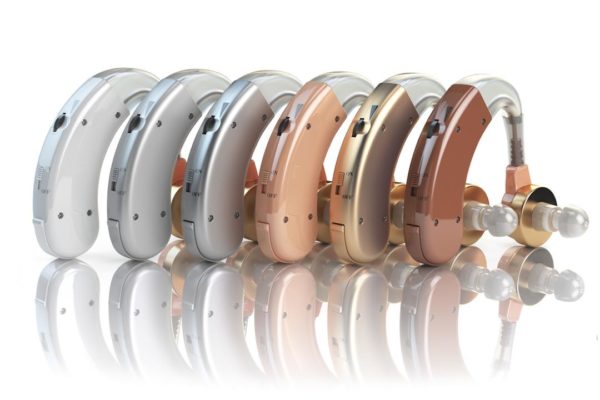22 + Statistics About Hearing Loss And Hearing Aids
It is predicted that by 2050, almost 2.5 billion people will have some degree of hearing loss, and around 700 million will need hearing rehabilitation. With projections indicating that the world population would be around 10 billion by then, this means that around a quarter of the world’s population will be affected by hearing loss.
Hearing loss is especially a concern among seniors. Over 30% of people between the ages of 65 and 74 live with hearing loss, while more than 50% of older adults above 75 face hearing-related challenges.
If these numbers are worrying, we should be thankful that research and development in audiology have made life more manageable for people with hearing loss. The development of hearing aids and cochlear implants means people with hearing loss can now live fulfilling lives.
To alleviate the challenge of hearing loss and do the best we can to ensure that people living with this condition lead comfortable lives, we need information. We gathered statistics that could help us understand hearing loss and hearing aids. In this article, we present what we found.
Hearing Loss and Hearing Aids Statistics at a Glance
Here are some statistics to provide you with a bird’s-eye view of the hearing loss challenge:
Hearing aid use was higher among men than women among those aged 45 and over.
- Over 430 million people are currently living with disabling hearing loss. That figure will nearly double within the next three decades to over 700 million.
- Individuals living in low- to middle-income nations make up 80% of the worldwide population of those living with disabling hearing loss.
- 7.1% of adults aged 45 and above used a hearing aid in 2019.
- Hearing loss ranks third on the list of the most endemic health challenges among older adults.
- According to the Centers for Disease Control and Prevention (CDC), “Hearing aid use was higher among men than women among those aged 45 and over. Among those aged 45–64, 2.8% of men and 1.9% of women used a hearing aid. Among those aged 65 and over, 19.2% of men and 10.6% of women used a hearing aid.”
What is Hearing Loss?
According to the American provider of medical information, WebMD.com, hearing loss refers to any medical condition characterized by an inability to hear sounds below a 20 dB threshold in both ears.
According to the World Health Organization (WHO), “Disabling hearing loss refers to hearing loss greater than 35 decibels (dB) in the better hearing ear.”
Disabling hearing loss refers to hearing loss greater than 35 decibels (dB) in the better hearing ear.
MedicalNewsToday.com identifies four levels of hearing loss or deafness.
- Mild Hearing Loss: This is characterized by the ability to hear sounds only within the range of 20 dB to 29 dB. People living with mild hearing loss may especially have difficulty hearing other people speak when there is a high background noise level.
- Moderate Hearing Loss: Individuals with this degree of hearing loss can only hear sounds from 40 to 60 dB. Such individuals have difficulty following conversations without a hearing aid.
- Severe Hearing Loss: Sounds need to be at least 70 dB to 89 dB loud for individuals with severe hearing loss to hear them.
- Profound Hearing Loss: People with profound deafness either cannot hear sounds below 90 dB or cannot hear any sounds at all, no matter how loud. Communication is exclusively through reading, writing, sign language, and lip-reading.
Age-Related Hearing Loss

Age-related hearing loss (sometimes referred to as presbycusis) denotes the progressive loss of hearing as people age.
The statistics prove the assertion that presbycusis correlates with aging. Over 30% of US residents aged 65 to 74 have hearing loss. The proportion of people with hearing loss shoots up to 50% among people above 75.
Generally, age-related hearing loss affects both ears equally. Its causes range from age-related changes in the inner ear or middle ear to changes in the nerves connecting the ear to the brain.
Presbycusis is an insidious condition. It happens gradually and, therefore, often goes unnoticed for years. Several factors contribute to presbycusis besides age. Some of these factors include chronic diseases like diabetes and heart disease, noise exposure, and an individual’s genetics.
Causes of Hearing Loss
Hearing loss has been linked to certain hearing-related conditions like tinnitus. Tinnitus is a persistent ringing sound in the ear that is not caused by external factors. People who experience tinnitus often report hearing a ringing sound inside their ears that nobody else can hear.
Here are a few numbers to help you understand tinnitus better:
- 90% of individuals with tinnitus also have hearing loss.
- Annual hospital visits for tinnitus treatment number about 16 million people.
- About 50 million adults in America report experiencing tinnitus.
- Tinnitus constantly ranks top of the list of disabilities experienced by returning military officers. In 2020, 2.3 million veterans were receiving compensation for tinnitus.
Other causes of hearing loss are age, headphones with a loud noise, heredity, specific illnesses, recreational noises (e.g., firearms), and certain medications.
Nearly 13% of children aged 6 to 19 have hearing loss from listening to very loud music through headphones. Around 17% of adults between 20 and 69 years live with permanent damage to their hearing because they were exposed to loud noises.
Impact of Hearing Loss
Hearing loss impacts cut across individual, societal, and economic spheres. On an individual level, hearing loss can lead to feelings of isolation when communication with others becomes a challenge.
People living with hearing difficulties also find it challenging to access employment and education. For instance, a 2016 Yang-Tan Institute at Cornell University analysis revealed that less than 40% of people with a hearing disability are in full-time employment.
The WHO estimates the global cost of untreated hearing loss at $980 billion per year. These costs include societal and healthcare costs and costs on educational support and productivity loss. Low- and middle-income nations bear about 57% of these costs.
Hearing Loss Prevention and Treatment
Even though there are no known methods for preventing age-related hearing loss, there are ways to prevent noise-related hearing loss. The most apparent preventive method is avoiding over-exposure to very loud noises. This means controlling the loudness of and duration for which you listen to music via earphones. Use earplugs or earmuffs in situations where you cannot control the noise source.
The general recommendation is to maintain the sound level on headphones between 60 and 85 decibels and not use headphones for more than 15 minutes at a time.
If you already have trouble hearing, you can still prevent further damage to your ears by taking precautionary measures against noise. Additionally, you can seek professional medical care from ear health experts. You may visit either an otolaryngologist, an audiologist, or a specialist in testing and selecting hearing aids.
Hearing Aids Market

The aggregate value of the global hearing aids market in 2020 was $10 billion.
Fortune Business Insights estimates a 28.1% decline in the value of the hearing aids market in 2020 after the market had been experiencing steady year-on-year growth for three consecutive years from 2017 to 2019. This decline, mostly due to the COVID-19 pandemic, left the market worth a little less than $7 billion in 2021.
Thanks to advancements in hearing aids technologies, the world is starting to emerge from the impact of COVID-19, and increased awareness about hearing loss and the benefits of hearing aids, the market is recovering. Projected growth from $6.67 billion in 2021 to $11 billion by 2028 is on the horizon for the hearing aids market.
One major drawback that continues to plague the growth of the hearing aids industry is the high cost of hearing aids. With an average of nearly $1,700 needed to fund hearing aids per ear, the current options may be too expensive for most people.
But as the technology develops and government intervention increases, we are likely to see a drop in the cost of hearing aids. For instance, today, you could get hearing aids for both ears at about $1,400.
The Future
While more of the world continues to experience hearing loss, technological advancements continue to speed up to match this increasing need. These days, hearing aids can do more than just improve hearing. Beyond functionality, hearing aids are also becoming more fashionable, and some may even pass off as cool-looking earbuds.
Advancements in hearing aid technology now see hearing aids come with advanced features like noise cancellation. This helps the wearer focus on what they want to hear by blocking out background noises.
More hearing aids and cochlear implants also come with Bluetooth-enabled compatibility features. Users can now sync their hearing aids with smartphones, tablets, and smart TVs.
An article published by the United States-based interest group focusing on issues affecting those over the age of 50, AARP.org, highlights features that make living with hearing loss more manageable, including a pair of glasses that converts speech to subtitles.
A Russian scientist is also working on helping a deaf couple reverse the genetic ramifications of their condition on their unborn baby. They plan to achieve this through genetic modification during artificial insemination.
Do you want to cite this page? Use our ready-made cite template.